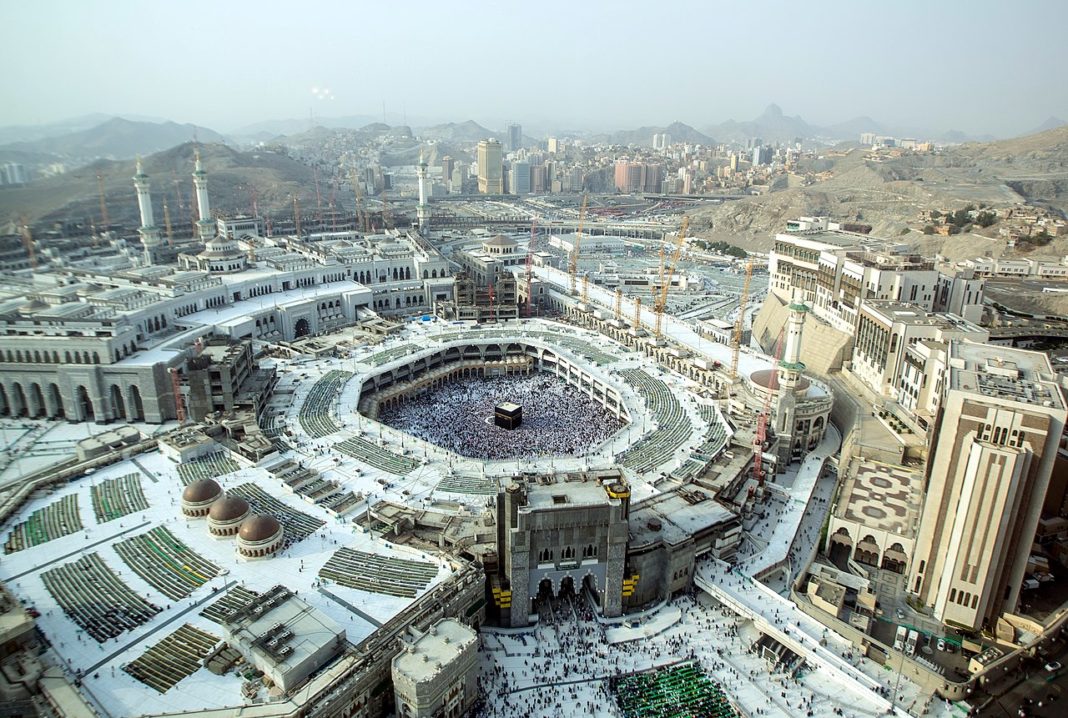It is a site of pilgrimage in the Hajj, which every Muslim must do at least once in their lives if able, and is also the main phase for the ʿUmrah, the lesser pilgrimage that can be undertaken any time of the year. The rites of both pilgrimages include circumambulating the Kaaba within the mosque. The Great Mosque includes other important significant sites, including the Black Stone, the Zamzam Well, Maqam Ibrahim, and the hills of Safa and Marwa.
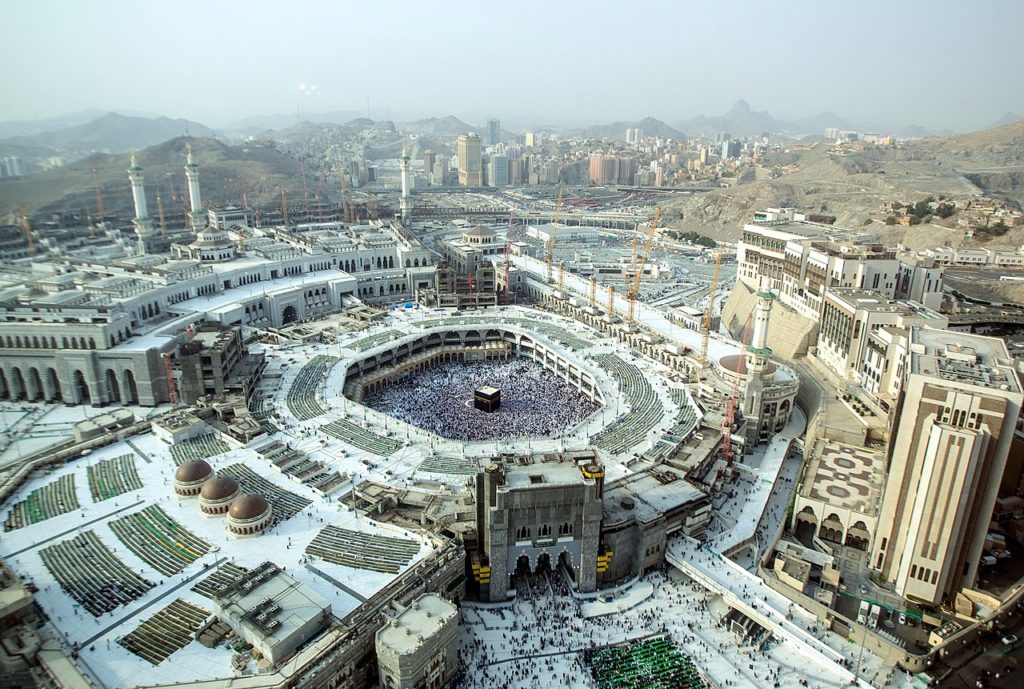
The mosque, which comprises a rectangular central courtyard surrounded by covered prayer areas, is the site of several pilgrimage rituals. Pilgrims use the courtyard to perform the ritual circumambulation of the Kaʿbah, known as the ṭawāf. Two more sacred sites are located in the courtyard: the station of Abraham, a stone which Islamic tradition associates with the Qurʾānic account of the rebuilding of the Kaʿbah by Abraham and Ismāʿīl (Ishmael), and the Zamzam well, a sacred spring. Immediately to the east and north of the courtyard are al-Ṣafā and al-Marwah, two small hills which pilgrims must run or walk between in a ritual known as the saʿy. In the 20th century an enclosed passageway between the two hills was appended to the mosque.
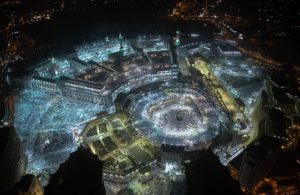
The modern building is the product of centuries of development. In the pre-Islamic era, the Kaʿbah, then a shrine for Arab polytheists, stood in an open space where worshippers gathered to pray and perform rituals. The Kaʿbah was also sacred to the first followers of the Prophet Muhammad.
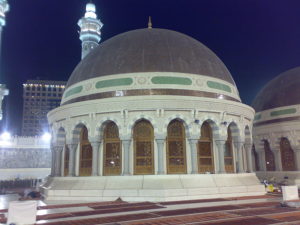
In August 2011, the government under King Abdullah announced further details of the expansion. It would cover an area of 400,000 m2 and accommodate 1.2 million worshippers, including a multi-level extension on the north side of the complex, new stairways and tunnels, a gate named after King Abdullah, and two minarets, bringing the total number of minarets to eleven. The circumambulation areas (Mataf) around the Kaaba would be expanded and all closed spaces receive air conditioning. After completion, it would raise the mosque’s capacity from 770,000 to over 2.5 million worshippers. His successor, King Salman launched five megaprojects as part of the overall King Abdullah Expansion Project in July 2015, covering an area of 456,000 m2. The project was carried out by the Saudi Binladin Group. In 2012, the Abraj Al Bait complex was completed along with the 601-meter-tall Makkah Royal Clock Tower.
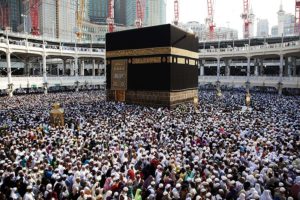
As of August 2020, the Great Mosque is the largest mosque in the world.
According to Wikipedia; britannica





